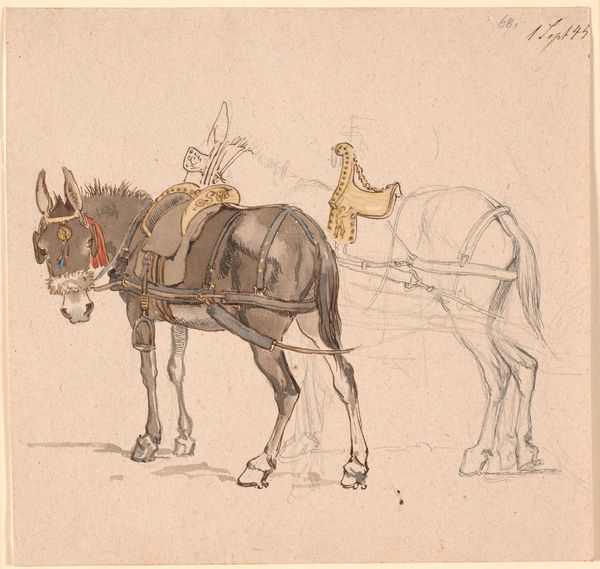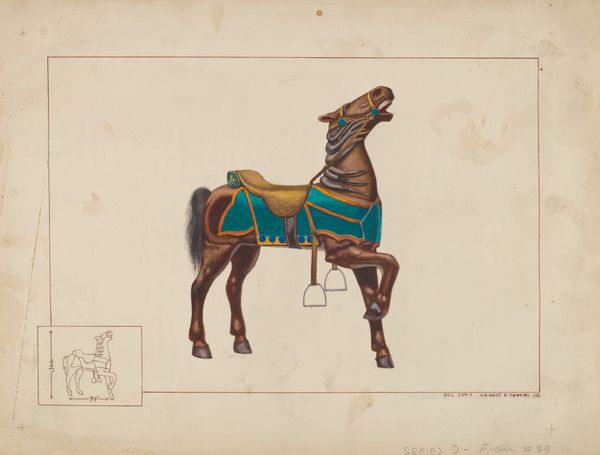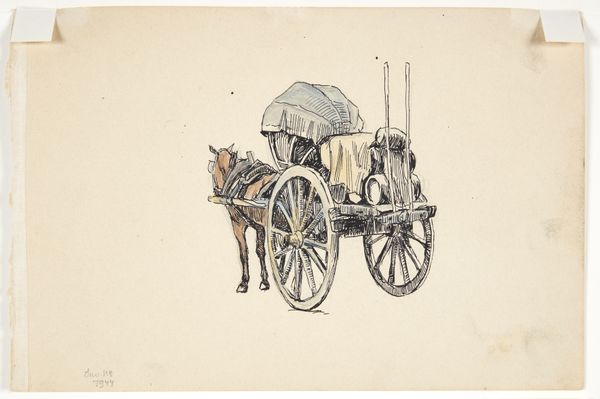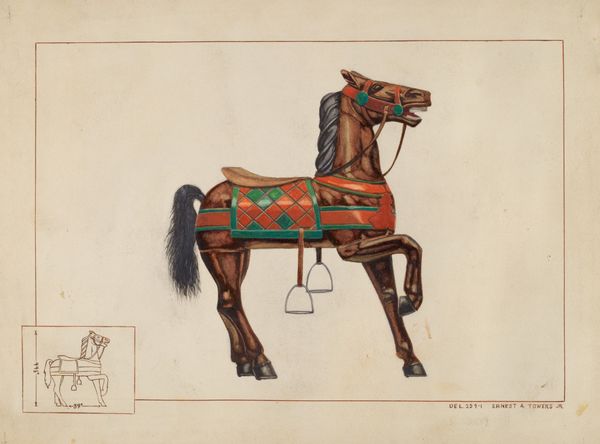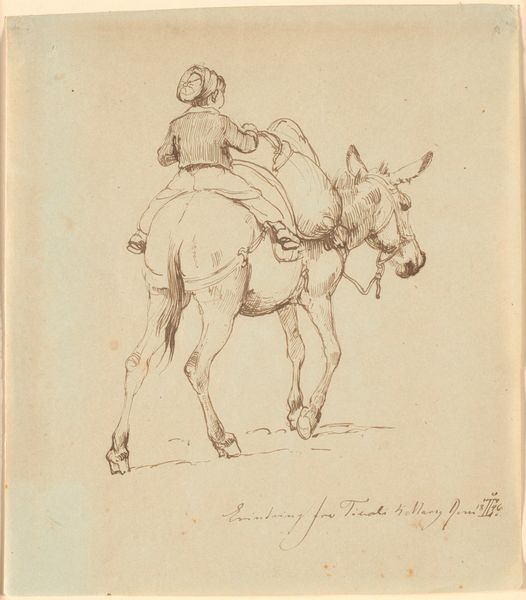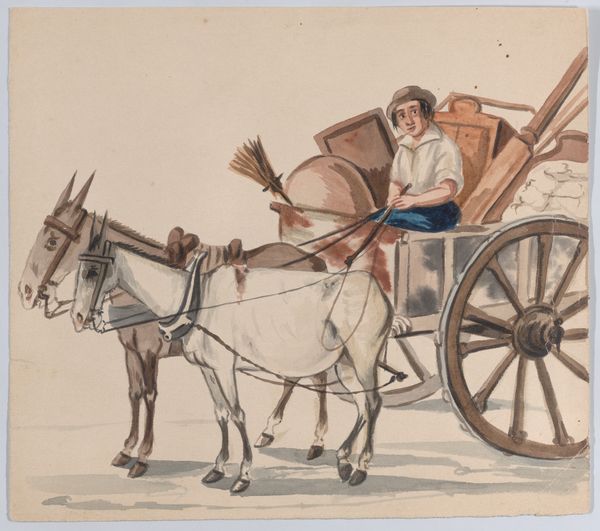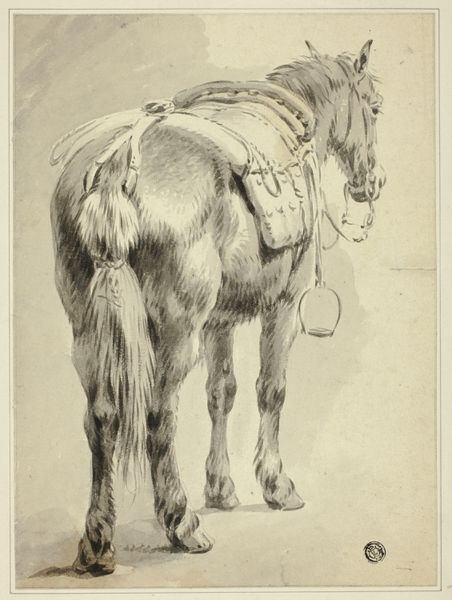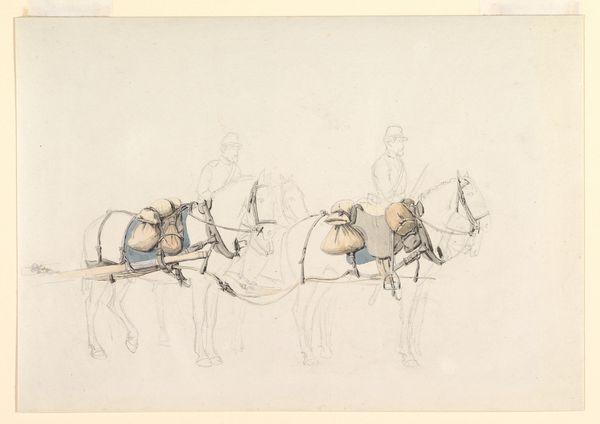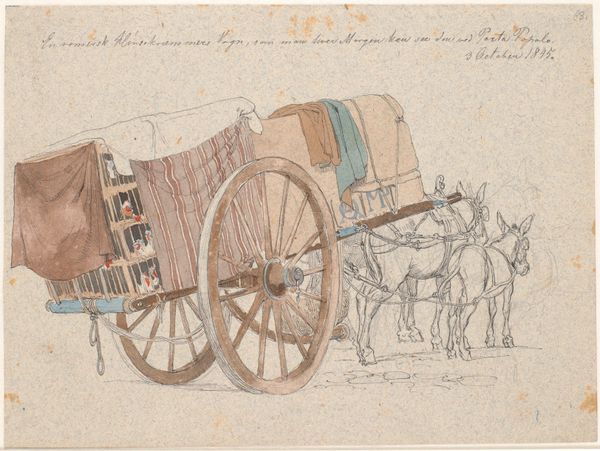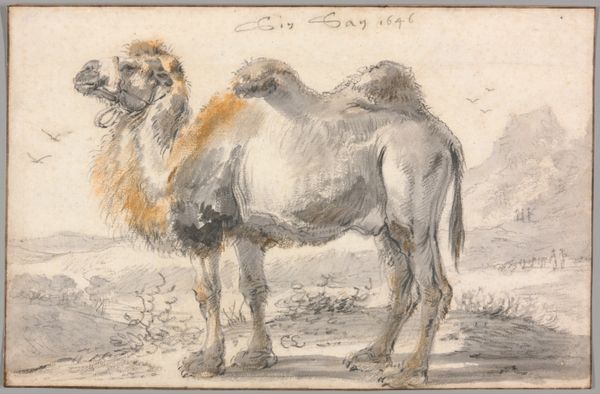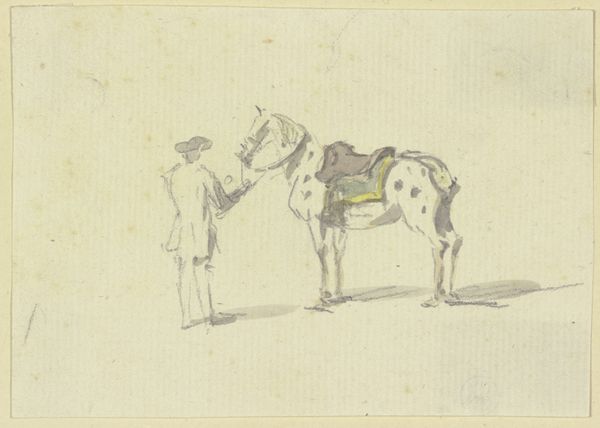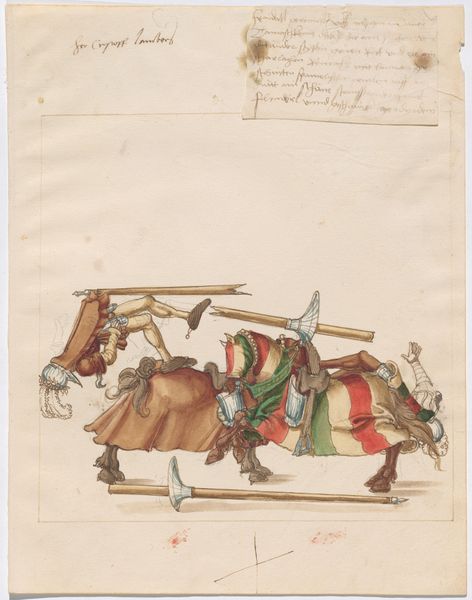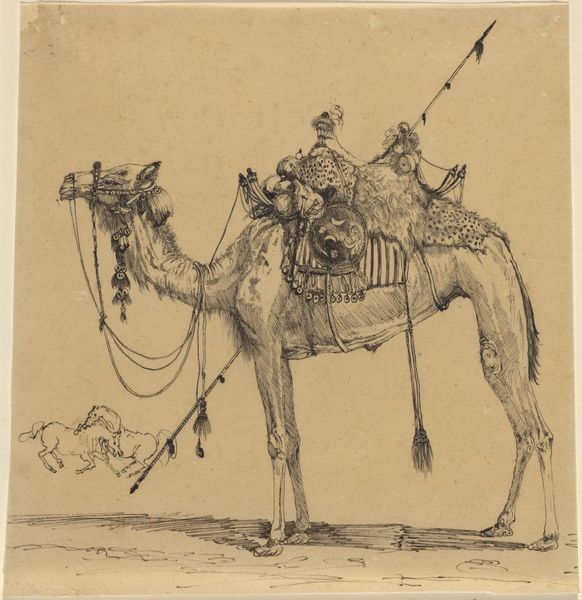
Et muldyr i færd med at æde sit grøntfoder. Til højre på påklæbet papir en dekorativ bort 1846
0:00
0:00
drawing, watercolor
#
drawing
#
landscape
#
figuration
#
watercolor
#
romanticism
#
watercolour illustration
#
watercolor
Dimensions: 144 mm (height) x 226 mm (width) (bladmaal)
Editor: This watercolor and drawing, made in 1846 by Johan Thomas Lundbye, depicts “A mule eating its greens.” The texture of the mule’s fur and the draped textiles is wonderfully rendered. There’s also what seems like a decorative border on the right, collaged onto the scene. What catches your eye about this piece? Curator: The juxtaposition of the 'high art' landscape tradition with the 'low' or decorative craft is quite interesting. The image invites us to question those distinctions, specifically through its materials. Lundbye’s choice of watercolour on paper, combined with the pasted-on decorative border, speaks to broader issues of production and consumption at the time. What does the application of materials suggest? Editor: I see. It's like Lundbye is actively disrupting the accepted notions of what "fine art" should be, maybe hinting at the everyday materials that influence even high art. He is layering materials but also styles and context.. Curator: Precisely! Consider the Romanticism tag attached to this work. While celebrating nature, Romanticism also coincided with increased industrialization. The mule is an animal of labour. And that paper border might mimic textile or architectural elements mass-produced. So how does Lundbye engage with labour and craft traditions to represent his cultural environment? Editor: It makes you think about the tension between handmade and mass-produced objects and the labor involved in creating them. Was this watercolor made to record the real conditions in Denmark or more romanticize the lifestyle of people? Curator: Exactly. I wonder also what that pasted paper implies in terms of a readymade item that disrupts what looks to be a spontaneous, 'natural' sketch. These contrasting modes of production and mark-making enrich our understanding. It appears the "organic" needs some artifice or decoration in order to be a suitable image, which can inform or even critique social behaviours. Editor: I didn’t consider that before. I’m starting to look beyond the simple image. Now I see questions about the meaning of artistic labor embedded in these material choices. Thank you for shedding light on these considerations.
Comments
No comments
Be the first to comment and join the conversation on the ultimate creative platform.
